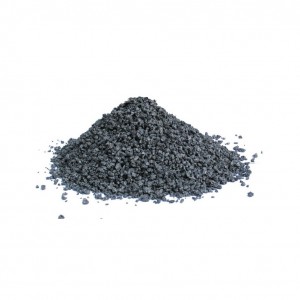As for the discovery and utilization of flake graphite, there is a well-documented case, when the book Shuijing Zhu was the first one, which stated that “there is a graphite mountain beside the Luoshui River”. The rocks are all black, so books can be sparse, so they are famous for their graphite. ” Archaeological findings show that as early as more than 3,000 years ago in the Shang Dynasty, China used graphite to write characters, which lasted until the end of the Eastern Han Dynasty (AD 220). Graphite as book ink was replaced by pine tobacco ink. During the Daoguang period of the Qing Dynasty (AD 1821-1850), farmers in Chenzhou, Hunan Province mined flake graphite as fuel, which was called “oil carbon”.
The English name of Graphite comes from the Greek word “graphite in”, which means “to write”. It was named by German chemist and mineralogist A.G.Werner in 1789.
The molecular formula of flake graphite is C and its molecular weight is 12.01. Natural graphite is iron black and steel gray, with bright black streaks, metallic luster and opacity. The crystal belongs to the class of complex hexagonal biconical crystals, which are hexagonal plate crystals. The common simplex forms include parallel double-sided, hexagonal biconical and hexagonal columns, but the intact crystal form is rare, and it is generally scaly or plate-shaped. Parameters: a0=0.246nm, c0=0.670nm A typical layered structure, in which carbon atoms are arranged in layers, and each carbon is equally connected with the adjacent carbon, and the carbon in each layer is arranged in a hexagonal ring. The hexagonal rings of the carbon in the upper and lower adjacent layers are mutually displaced in the direction parallel to the mesh plane and then stacked to form a layered structure. Different directions and distances of displacement lead to different polymorphic structures. The distance between the carbon atoms in the upper and lower layers is much larger than that between the carbon atoms in the same layer (C-C spacing in layers =0.142nm, C-C spacing between layers =0.340nm). 2.09-2.23 specific gravity and 5-10m2/g specific surface area. The hardness is anisotropic, the vertical cleavage plane is 3-5, and the parallel cleavage plane is 1-2. Aggregates are often scaly, lumpy and earthy. Graphite flake has good electrical and thermal conductivity. The mineral flakes are generally opaque under transmitted light, extremely thin flakes are light green-gray, uniaxial, with a refractive index of 1.93 ~ 2.07. Under reflected light, they are light brown-gray, with obvious reflection multicolor, Ro gray with brown, Re dark blue gray, reflectivity Ro23 (red), Re5.5 (red), obvious reflection color and double reflection, strong heterogeneity and polarization. Identification features: iron black, low hardness, a group of extreme perfect cleavage, flexibility, slippery feeling, easy to stain hands. If zinc particles wetted by copper sulfate solution are placed on graphite, metallic copper spots can be precipitated, while molybdenite similar to it has no such reaction.
Graphite is an allotrope of elemental carbon (other allotropes include diamond, carbon 60, carbon nanotubes and graphene), and the periphery of each carbon atom is connected with three other carbon atoms (a plurality of hexagons arranged in a honeycomb shape) to form covalent molecules. Since each carbon atom emits an electron, those electrons can move freely, so flake graphite is an electrical conductor. Cleavage plane is dominated by molecular bonds, which have weak attraction to molecules, so its natural floatability is very good. Because of the special bonding mode of flake graphite, we can’t think that flake graphite is single crystal or polycrystal. Now it is generally considered that flake graphite is a kind of mixed crystal.
Post time: Nov-04-2022
